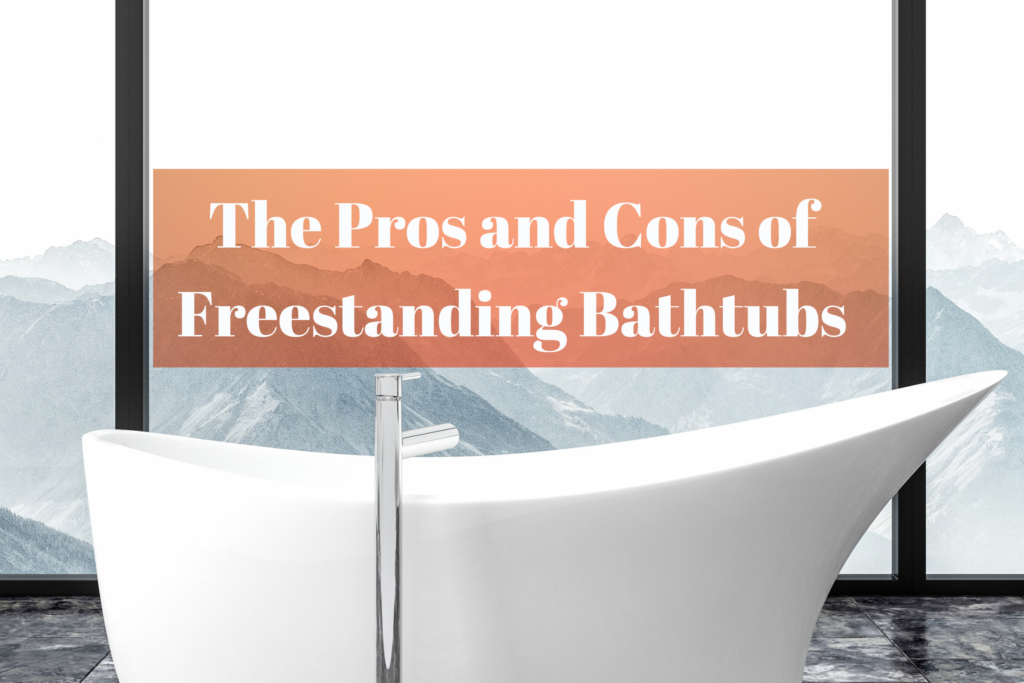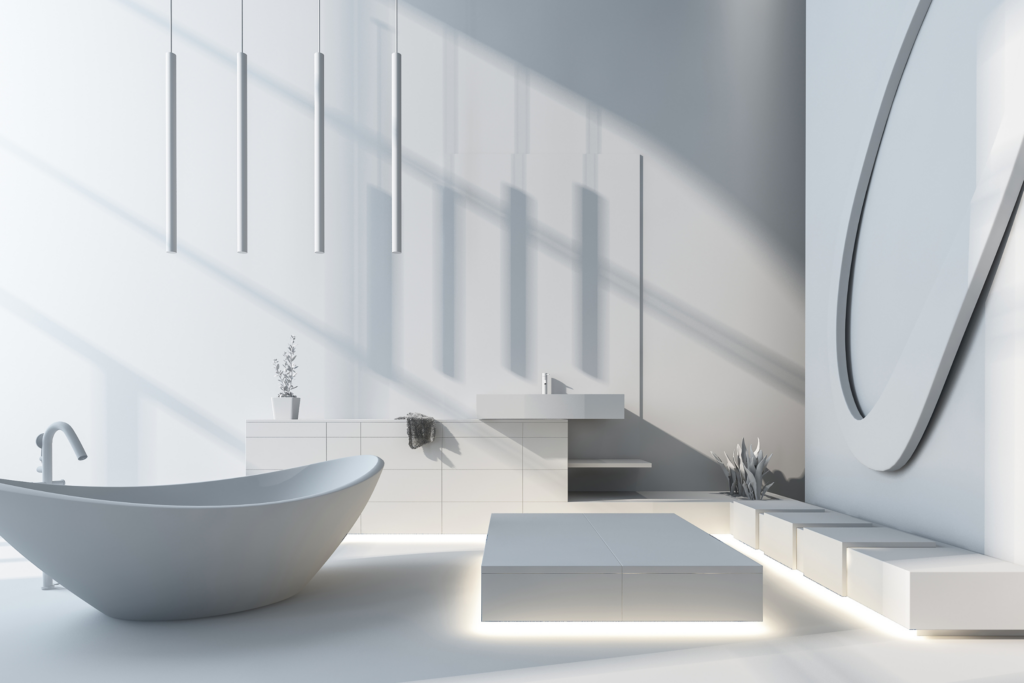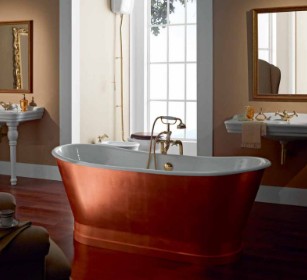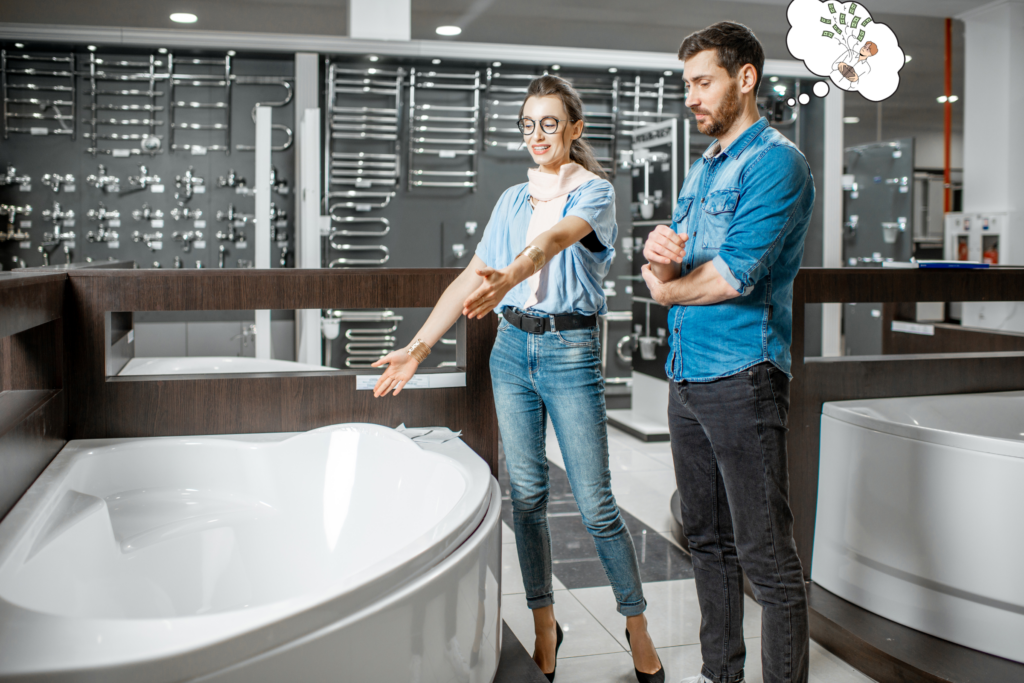The Pros and Cons of Freestanding Bathtubs (9 Great Pros & 5 Cons)
Whether contemporary or classic models, freestanding bathtubs can be a stunning addition to your bathroom if you want to relax after a long day. Even though they scream elegance, they are not flawless, thus a need to know the pros and cons of freestanding bathtubs.
The pros of freestanding bathtubs include aesthetic appeal, flexibility, ease of installation, cleaning, and maintenance. They are also easy to replace and give the impression of more space. However, they have shortcomings, such as consuming more space, getting heavy, and being expensive.
This post covers the pros and cons of freestanding bathtubs by diving into the numerous factors that may influence your decision to choose this type of appliance. Read on to learn more!

What Are the Pros of Freestanding Bathtubs?
What are the pros and cons of freestanding bathtubs? When considering installing freestanding bathtubs the pros definitely outweigh the cons. A freestanding tub could be the missing piece in your bathroom because of the following benefits:
1. Aesthetic Appeal
Freestanding bathtubs are the pinnacle of luxury bathroom design. Nothing compares to their visual effect in terms of aesthetics, seeing that they can transform a dull room into a stylish one in seconds.
You can buy one that best matches your distinctive look because it comes in different styles, from classic to contemporary features. They are one-of-a-kind and create an impression frequently linked with luxury.

2. Fits Multiple Options
A standalone tub can complement any bathroom decor. There is no end to the diversity of freestanding bathtubs, which range from the classic clawfoot to contemporary egg-form soaking tubs.
Since the necessity of squeezing into tiles or walls does not constrain them, designers can be more inventive with the shape. A freestanding bath will make almost any choice appear more stunning, whether you intend to match wall tiles and the floor to have an elegant backdrop. This is one important factor to consider when weighing the pros and cons of freestanding bathtubs.
3. Easy to Install
A freestanding bathtub is easier to install in a bathroom floor than a built-in unit because it does not need additional structure, support, or grouting. You probably only need a plumber for the piping, unlike built-in tubs with a surround that require a contractor and designers for a full bathroom renovation.
Any part of your bathroom can accommodate the freestanding tub and a freestanding mixer tap; it’s that easy. However, you may need to reinforce the floor if you plan to place the tub on a deck, which adds to the installation costs. This is another one of the most important things to consider when weighing the pros and cons of freestanding bathtubs.
4. Offer Flexibility
Thanks to the surrounding plumbing, you can install freestanding tubs anywhere in your bathroom, even in the middle!. Standalone tubs offer you the liberty of installing them close to a window so you can soak while enjoying the outside view.
5. Easy to Clean and Maintain
If you’re wondering, “Are freestanding tubs hard to clean behind,” the answer is quite simple. Freestanding tubs do not require the same cleaning and maintenance as regular bathtubs since they are not bordered and tiled into a wall as standard baths.
Therefore, you’ll find that maintaining a freestanding bath in pristine condition is a breeze. In fact, it ought to be much easier to clean a freestanding tub than a built-in tub because you can maneuver around it.
6. Good Soaking Depth
Thanks to their considerable depth, modern freestanding bathtubs are often known as “soaking tubs.” The depths of these soaking baths vary from 14 to 25 inches.

7. Comfort
Comfort adds to the list of benefits of these high-end bathtubs, depending on the model you purchase. For instance, a classic clawfoot tub might be most comfortable for some, while an acrylic modern soaking tub for two may provide others with the space and shape you want.
Add in some candles and a book and start relaxing!
8. Easy to Replace
You won’t need to make structural alterations to your bathroom while changing a freestanding tub because no disassembling or reframing is involved. It makes replacing a standalone tub straightforward.
9. Variety
Freestanding tubs’ availability in myriad styles wraps up our list of benefits. You will find style options and design options like rectangular, oval, or circular shapes and materials such as cast iron, wood, acrylic, and copper. There is also an option for multiple colors.

What Are the Cons of Freestanding Bathtubs?
When considering the pros and cons, it’s important to spend some time discussing the cons of a freestanding bathtub:
1. More Expensive
Freestanding bathtubs cost a fortune because you will incur purchase and installation costs. It may easily cost you thousands of dollars to get it up and running.
Furthermore, freestanding bathtubs are fragile tubs that demand expert plumbers; just a mistake will make your bathroom flood. As a result, the plumbing for a standalone tub is more costly than an inbuilt one. This is one of the most important factors when considering the pros and cons of freestanding bathtubs.

2. They Are Heavy
Most freestanding tubs are weighty, necessitating floor strengthening- this is unquestionably true for cast iron bathtubs. Fiberglass variants are available, although they are less popular and may be more pricey and bigger, thus weighing more when filled with water.
Furthermore, their weight makes them almost impossible to shift after installation, so be careful where you lay them since you won’t be able to relocate them without expert help. Besides that, you will need to reinforce the bathroom flooring, especially when placing them on higher floors.

3. Storage Problems
Freestanding tubs offer fewer storage choices than built-in baths. A standalone tub doesn’t include a shelves to place your toiletries, bath towels, or other accessories.
However, you may alleviate this issue by buying a rolling caddy or tub tray. While this might not be a major factor when considering the pros and cons of freestanding bathtubs, it still factors in.
4. Consume More Space
Generally, freestanding bathtubs are suited for spacious bathrooms. If you’re searching for freestanding units for a medium-sized bathroom, your selections are significantly limited.
The size of freestanding tubs also makes them challenging to clean, especially when installed in a corner. Experts recommend placing them away from the wall so that you can clean all the components.
5. Showerless
It is feasible to attach a shower to a freestanding bathtub, but it looks ridiculous and necessitates the inclusion of a wrap-around curtain.
Freestanding Tub with Faucet
A floor-mount faucet (also known as a tub filler) elevates the freestanding tub look. It will make an instant, stunning style statement in any bathroom.
A freestanding setup exposes the faucet pipe (no barriers, access panels, etc.), allowing for a free workspace. The project is easy and quick, with no soldering required, but it may be essential to strengthen the floor, which may entail carpentry expertise.
Furthermore, you can use wall-mounted faucets with freestanding bathtubs. Since many freestanding bathtubs do not have tap holes, they function well with a freestanding faucet.

Freestanding Tub with Shower
You can install a shower in a freestanding bathtub, but you’ll have to hang your shower rod and circle the bathtub with curtains to keep the floor dry.
Freestanding VS. Built-in bathtubs
Freestanding tubs are typically much more expensive than built-in tubs. A built-in tub may be standard within a given house, but a freestanding tub will likely have to be ordered separately.
There really isn’t much functional difference between the two. It’s more of a matter of preference. Freestanding tubs tend to have a better aesthetic appearance than built-ins, which may lead to a difference in price.
Summary of the Pros and Cons of Freestanding Bathtubs
In the world of bathroom design, freestanding bathtubs are popular. However, it’s always a good idea to weigh the advantages and downsides before deciding.
This was a complete review of the pros and cons of freestanding bathtubs. We hope you’ve had the chance to consider your circumstances and come to a conclusion that fits your situation.
Here are other interesting posts:
Let Us Know How We’re Doing!
Did this expertly prepared resource answer your question?
Do you have another question about home maintenance, home improvement projects, home appliance repair, or something else?
Get more information, send in questions and keep the discussion going by contacting the I’ll Just Fix It Myself company customer service team at at 1-800-928-1490 or Email us at [email protected]
